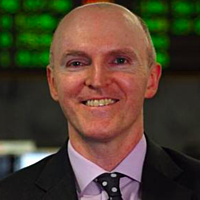A$ on the rise: Deal or no deal?

Westpac Bank
The US and China are still talking about a trade deal, which is a positive outcome from last week’s meetings given the diplomatic tensions leading up to the meeting. President Trump declared that he had made the greatest and biggest deal ever on behalf of American farmers.
As usual, Chinese official commentary has been more cautious and indeed no formal document was signed. The next key date appears to be the APEC summit in Chile mid- November, where what Mr Trump calls a “Phase One” agreement could be signed, assuming talks continue.
For now though, the only tariff concession from the US is to not proceed with the hike from 25% to 30% on $250bn of Chinese imports that had been due to take place this week. Also still in place is a 15% tariff on about $110bn of imports that came into effect on 1 September.
Such tariffs provide an obvious incentive to shift production not to the US but to other low cost countries in Asia. The narrowing in the US trade deficit with China & HK has coincided with further widening in the US deficit with other Asian manufacturing centres.
But near term, the positive tone from both China and the US on trade relations should continue to support risk appetite. It is surely a positive for AUD/USD, though its initial response to the trade deal was quite muted.
There may be more lasting support for the Aussie from a change in market expectations for RBA monetary policy. Australia reported a 15,000 rise in jobs in September, keeping the annual pace of job creation at a brisk 2.5%. Most sensitive for markets given the RBA’s focus, the unemployment rate fell from 5.3% to 5.2%. This might be a small move but for investors who had been sitting on the fence over the RBA’s decision in November, it was viewed as quite significant.
Pricing for a November cash rate cut was around 45% mid-week but was trimmed to a modest 25% after the unemployment data. This move extended to just a 15% chance on Friday after comments from RBA governor Lowe in Washington DC as he attended IMF annual meetings. Lowe expressed optimism over Australia’s growth prospects in 2020 and declared that, “negative interest rates are extraordinarily unlikely in my country”.
This helped the Aussie dollar reach 1 month highs around 0.6830. But the Aussie also got a boost along with the euro and of course the British pound as the European Union and UK prime minister Boris Johnson announced that they had reached an agreement for Brexit to take place as soon as the end of this month.
The pound reached 5 month highs but the withdrawal agreement needs to be approved by Parliament. Johnson’s government has suffered several big defeats in parliamentary votes in recent months, so his luck will need to change on Saturday if his deal is to become law. Either way, the pound is in for another volatile few days.
2 topics

Sean Callow is Westpac Bank's Senior Currency Strategist, based in Sydney. Sean focuses on the Australian dollar and other G10 and Asian currencies. He has worked in strategy and economics roles in New York, London, Singapore and Melbourne.
Expertise

Sean Callow is Westpac Bank's Senior Currency Strategist, based in Sydney. Sean focuses on the Australian dollar and other G10 and Asian currencies. He has worked in strategy and economics roles in New York, London, Singapore and Melbourne.
